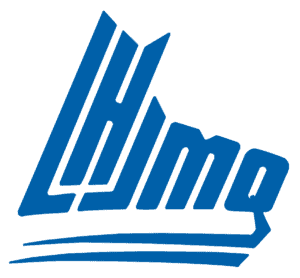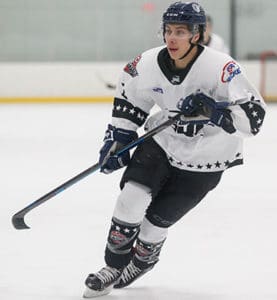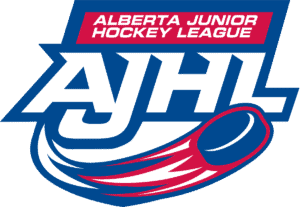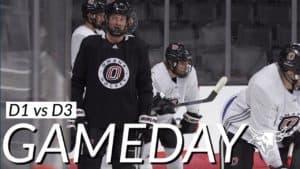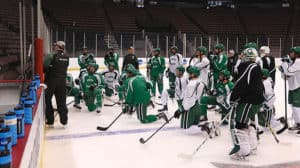With the New England Wolves we’ve had many international athletes join our program since inception in the 2011-12 season. Players from all over the globe, also have a wide array of opinions and training methods that are used in their native countries. Learning and speaking with these athletes provides a ton of insight into how they think about off- ice training and how it has helped as they translate their cardiovascular conditioning to the ice.
Here are some thoughts…
Russian players Run Long Distance
All of the Russian players we’ve had, and this includes players from former Soviet states like Latvia and Belarus, all have spoken to me about how their youth hockey involved long distance running. 60 minutes. 10 miles. Steady, grinding pace.
There are the obvious advantages, such as Heart Health, improving aerobic endurance, training the body to use fat for fuel and others. However, some of the advantages of Long Distance running for Hockey and Sports in general that are not as talked about is how high mileage running makes the athletes tendons and muscles more efficient. For example:
Our study detailed how those who regularly ran 30 miles or more a week showed neuromuscular changes that improved their running efficiency, meaning they needed to do less work to cover the same distance. This is due to changes in the muscles and tendons triggered by high-mileage training – and these adaptations are enhanced the faster you go. The leg muscles of the high-mileage runners did not have to work as hard as the same muscle groups of runners we studied who were less trained. The better trained runners also demonstrated more spring-like behavior in their lower leg tendons, which helped propel the body forward more efficiently.
Canadian Scott Niedermayer trained in the Mountains… Should Hockey Players Run Hills?
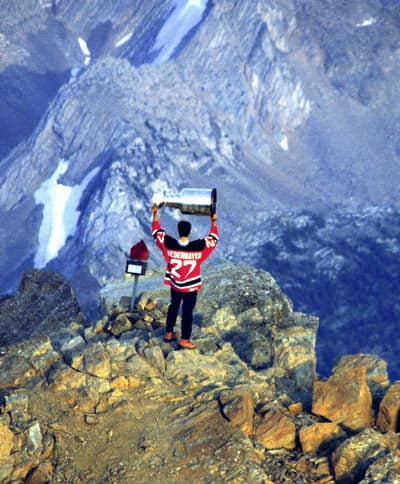
One of the greatest skaters of all-time, Scott Niedermayer, famously trained in the Canadian Rocky Mountains, near his hometown in British Columbia. Niedermayer was famous for not only his skating ability, having twice won the NHL’s fastest skater competition as a defenseman, but also because of seemingly endless endurance, regularly playing 30 minutes a night.
Here are some of the advantages of Hill Training that are not as obvious as you’d think.
- Uphill running forces you to drive your arms harder than you do when running on flat ground. This means you’ll improve your ability to engage your core as well as boost your upper body strength
- Runners can add intensity by speeding up, but hills offer a way to increase intensity while going at the same speed. Your heart rate, respiration, and probably the rate of your perspiration, will go up as you start running uphill.
- Running inclines is a form of resistance training. It builds muscle in your calves, quads, hamstrings, and glutes. You’ll also strengthen your hip flexors and Achilles’ tendons.
- Hill running strengthens these areas more than running on flat surfaces. As a bonus, if you hate doing circuit training or strength training, hills can be a great way to build these muscles through running rather than lifting weights.
The Benefits of Hill Running (verywellfit.com)
US Hockey Advocates for Sprint Training
Hockey is an interval sport, with short durations of intense speed. You see this every game when players on are the ice for 30-40 seconds performing at max capacity, and then off the ice to rest. The idea of practicing and replicating this intense training off the ice is why many athletes choose sprint training as a way to prepare themselves for hockey.
Sprinting and linear skating are not biomechanically identical tasks due to the lateral components of the skating stride. However, if we take a step back and take a more global approach to analyzing the two tasks, we realize that there are many more similarities that drive linear speed both off and on ice than are often acknowledged.
- Both share foundations as bipedal gait patterns that allow the athlete to propel themselves through space via alternating cycles of stance and swing phases.
- Impulse, the amount of force applied during ground contact, will determine the movement of the centre of mass (COM) both on and off the ice. Thus, applying a larger propulsive net horizontal impulse during ground contact will result in the COM moving at faster velocities during sprinting and skating.
- The movements of the athlete can be described by their stride length and stride rate. There likely exists an optimal range of stride length and stride rate depending on whether the athlete is accelerating or at top speed, the athlete’s current levels of strength, technical abilities, and anthropometrics.
- Both require the skill to coordinate the movement of the torso and limbs through space. Athletes who are more proficient at these motor skills are able to rapidly and efficiently position their joints into biomechanically favourable positions setting the table for favourable kinetics.
Maximum Velocity Sprinting For Hockey Players | ProHockeyStrength.com
Click on this link for a Sprint Training Program ideal for Hockey Players:
https://youtu.be/785F8BND1ys
In Summary all forms of running off the ice have significant benefits to On Ice Performance especially during the off season, and should be incorporated into your program in order to avoid burnout and boredom. In order of importance I’d rank them this way:
- Sprint Training– Look at Sprinters bodies- Strong, Fit and Athletic looking. This training duration most closing mimics On Ice Hockey shifts, and if you want to play fast you need to train fast.
- Hill Running– Significant benefits with lung capacity when training in altitudes and Strength benefits for training in includes. The Legs feed the Wolf.
- Distance Running– Incorporating a long run in the off season once every two weeks has significant benefits to the muscles in your lower body and lower leg tendons. It increases endurance as well.
Andrew Trimble is the General Manager and Co- Owner of the New England Wolves Hockey Club. He is also the Owner of Scoring Concepts LLC, a New Hampshire based hockey training company that offers camps, clinics, private lessons and teams. He has coached at all levels from Learn to Skate to College Hockey. For more info on his teams and programs check out- www.scoringconcepts.com or www.ne-wolveshockey.com

